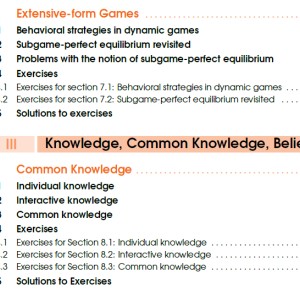Ex. 1
a. The extensive form and the strategic form are computed in the attachments. For the strategic form, the first letter denotes what to do if the card that player 1 gets is high, the second letter denotes what to do if the card that player 1 gests is low; for example, $PF$ means "Play if the card is high, fold if the card is low", while $PP$ means "Play in both cases". The expected payoffs are computed in the "expected payoff" file (look at the most recent version, it has slightly more details).
Since $PP$ dominates $FP$, and $PF$ dominates $FF$, we can conclude that player 1 should always play if they get a $H$, so we can simplify the table as in the picture "strategic_form_simplified".
b. If $1 < A < 2$, there is a unique Nash equilibrium in pure strategies: P1 always plays, and P2 always folds: in fact, if P1 switches to $PF$, their expected payoff goes to $0$, and if P2 switches to "Call", their payoff becomes $(A-4)/2 < -1$ for $1 < A < 2$.
If $A=2$, we have the same Nash equilibrium in pure strategies, but we also have an equilibrium in mixed strategies (see later).
If $A > 2$, there is no equilibrium in pure strategies. To find the equilibrium in mixed strategies, we proceed as follows. Suppose P1 picks strategy $PP$ with probability $p$, and $PF$ with probability $1-p$; P2 calls with probability $q$, and folds with probability $1-q$.
For P1, the expected payoff for $PP$ is \[ q \cdot \frac{4-A}{2} + (1-q) \cdot 1 \] and the expected payoff for $PF$ is \[ q \cdot \frac{3}{2} + (1-q) \cdot 0; \] $P1$ will use mixed strategies if and only if those are the same, meaning \[ q \cdot \frac{4-A}{2} + (1-q) \cdot 1 = q \cdot \frac{3}{2} + (1-q) \cdot 0 \] which gives \[ 2q - \frac{A}{2} q + 1 - q = \frac{3}{2} q \] or $q = \frac{2}{A+1}$.
For P2, the expected payoff for "play" is \[ p \cdot \frac{A-4}{2} + (1-p) \cdot (-\frac{3}{2}) \] and the expected payoff for "fold" is \[ p \cdot (-1) + (1-p) \cdot 0, \] so again we equate them and get \[ \frac{A}{2} p - 2p - \frac{3}{2} + \frac{3}{2} p = -p \] which gives \[ \frac{A+1}{2} p = \frac{3}{2} \] or $p = \frac{3}{A+1}$.
For $A=2$, this gives the mixed strategy where P1 always plays, and P2 plays with probability $2/3$ and folds with probability $1/3$. In general, for $A>2$ this gives the mixed strategy where P1 always plays with a high card, plays with probability $\frac{3}{A+1}$ with a low card, and P2 plays with probability $\frac{2}{A+1}$.
Ex. 2
a. The proposition "Ann is in Paris" is represented by $E = \{a,c\}$. The proposition "Ann is in London" is represented by $F = \{b,d\}$.
b. If Bob knows that Ann is in Paris, then we must be in state $a$ (Bob can't distinguish $c$ and $d$), so $K_{Bob} E = \{a\}$.
c. Carla cannot distinguish between states $a$ and $b$, and between states $c$ and $d$, so she cannot determine whether Ann is in Paris or not. It follows that $K_{Carla} E = \varnothing$.
d. We have $K_{Bob} E = \{a\}$ and $K_{Bob} F = \{b\}$, so $K_{Bob} E \cup K_{Bob} F = \{a,b\}$, so \[ K_{Carla} (K_{Bob} E \cup K_{Bob} F) = \{a,b\}. \]
e. We have shown that the event "Bob knows where Ann is" is $K_{Bob} E \cup K_{Bob} F = \{a,b\}$, and we already said that the event "Ann is in Paris" is $E = \{a,c\}$, so the event "Ann is in Paris and Bob does not know that Ann is in Paris" is \[ G = E \cap \lnot (K_{Bob} E \cup K_{Bob}F) = \{a,c\} \cap \lnot \{a, b\} = \{a,c\} \cap \{c,d\} = \{c\}. \] By definition, the event "David considers $G$ possible" is \[ \lnot K_{David} \lnot G = \lnot K_{David} \{a,b,d\}, \] bud David cannot distinguish any case so $K_{David} \{a,b,d\} = \varnothing$, which in turn means $\lnot K_{David} \lnot G = \{a,b,c,d\}$, meaning that David always considers it possible that Ann is in Paris and Bob doesn't know that Ann is in Paris.
 Ugher
Ugher


What if you split the problem into two questions?
I'm not sure to be honest, I don't think I would get credit bc the prof is rather strict
What's the title of the book?
It would help to see some examples of solved exercises, I'm not very familiar with the topic and I don't know how to write a solution that would be satisfying for you. The book might be enough though.
Nvm, found the book, but still the solutions of similar exercises would help.
here is what slides we were given (let me know if they help or not) I uploaded them
Found an example as well. I'll post the complete answer soon.
https://docdro.id/GOPVbkn https://docdro.id/d9CB9xJ https://docdro.id/9W20Jh7
are you available for another hw ?
I'll check it!